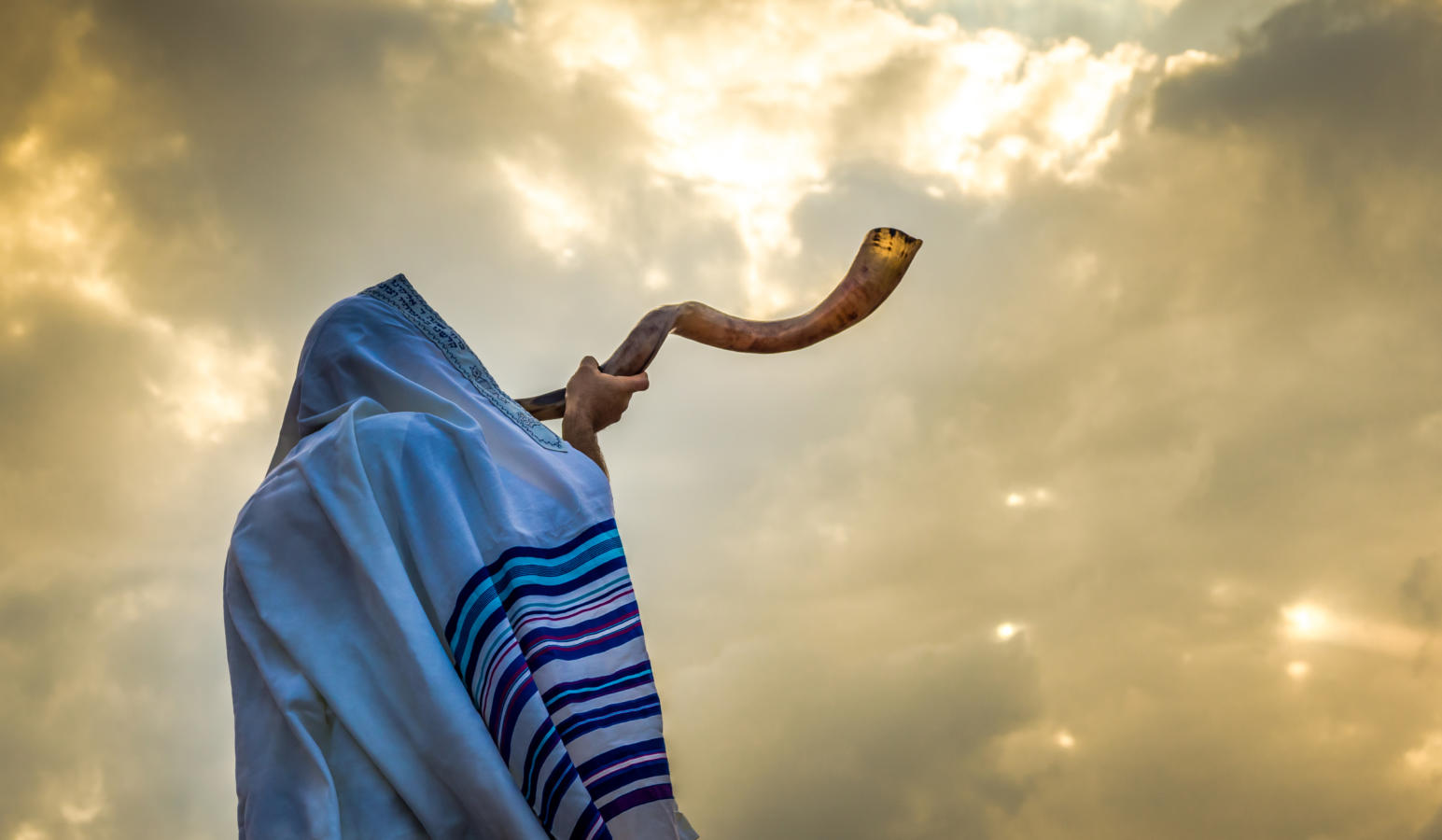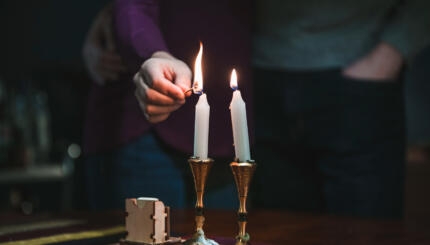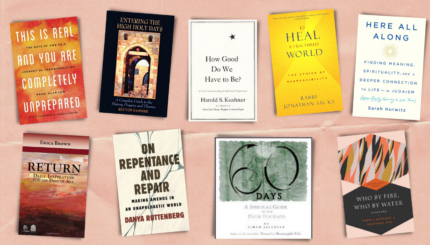The Musaf (“Additional”) Service is the name of the extra section of liturgy recited during morning services on Shabbat, festivals, and Rosh Chodesh. As the name implies, it is not typically viewed as the centerpiece of the service. In most cases, Musaf is relatively brief, mainly consisting of an Amidah with a Kedushah, and its text recalls how our ancestors brought animal sacrifices to the Temple in ancient times. The text in some siddurs expresses a desire to rebuild the Temple and reinstate sacrifice, while other versions simply acknowledge that these rituals used to be a part of Jewish tradition. Because it is arcane, short, and comes late in the service, many synagogues abbreviate Musaf by reciting most of the Amidah silently without a full repetition while others omit Musaf entirely, viewing it as anachronistic, out of step with modern Judaism.
But on Rosh Hashanah and Yom Kippur, all that changes. The Musaf service, usually more of an afterthought throughout the year, completely dominates the High Holiday liturgy. It is long, complex, and serves as the service’s centerpiece. It is here that we find the most iconic prayers: the cantor’s Hineni where he or she pleads to be worthy to lead the congregation in prayer; Unetaneh Tokef, the prayer which includes the well-known and haunting passage “Who Shall Live and Who Shall Die” and the “Great Aleinu” during which the cantor lies prostrate in front of the ark in utter supplication. These are moments of incredible drama and emotion.
But that’s not all. A bit later on in the Rosh Hashanah Musaf service —perhaps after some congregants have already left for home — we come to its heart. The most significant part of Musaf is divided into three distinct sections: Malchuyot (God as Sovereign), Zichronot (God remembers), and Shofarot (God and Revelation). These comprise the great themes of the holiday.
Each of these sections —Malchuyot, Zichronot and Shofarot — has an identical structure, beginning with an introductory text followed by exactly ten Biblical verses that help to illustrate the particular theme. These ten verses all follow the same pattern. There are three from the Torah, three from the Writings, three from the Prophets, and then one more from the Torah—all of which incorporate the same Hebrew roots which define that section. For instance, in the Malchuyot which describes God as a sovereign, we read:
With your help, My Jewish Learning can provide endless opportunities for learning, connection and discovery.
Adonai yimloch l’olam va’ed.
God will reign throughout all time. (Exodus 15:18)
Later, during Zichronot, one of the verses emotionally elicits the imagery of God as the parent of a beloved child:
Haven yakir li Ephraim im yeled sha-a-shuim ki midei dab-ri bo zachor ez-k’renu od…
Ephraim [a metaphor for the People Israel] is a dear child to me. Even when I reproach him, I remember him with tenderness… (Jeremiah 31:20)
Then in Shofarot, we recite the powerful verse:
V’hayah bayom ha-hu yi-takah b’shofar gadol…
And on that day the great shofar will be sounded… (Isaiah 27:13)
Finally, all three sections conclude with their own shofar blowing, punctuating each passage and drawing attention to its significance.
The order of the three sections is not random — it astutely captures our modern relationship with God. One could summarize Malchuyot (Sovereignty), Zichronot (Remembrance), and Shofarot (Revelation) as representing our collective past, present, and future.
First, in Malchuyot (Sovereignty) we look to our origins as the first monotheistic religion. Rather than entreating multiple deities to provide for all of our needs — food, weather, fertility — we declared that there was one true God who reigned over all aspects of life. That was an absolutely radical notion at the time, and of course it still defines the essence of Judaism.
Then, in the Zichronot (Remembrance) verses of Musaf, we acknowledge the role that God plays in our current lives. Certainly we view God from a greater distance than some of our ancestors — there’s no longer direct divine prophecy such as we read about in the Bible. However, we trust that even though we are far removed from that time, God remembers us today, and even more importantly, that we too remember God. While God may be literally out of sight, God should never be out of mind.
Finally, we come to the most provocative section, Shofarot (Revelation), which looks to our future as a people. In Judaism, we recognize that while God was revealed to Moses on Mount Sinai, that event did not represent the end of our relationship. In fact, God’s revelation continues each day. It attests to the brilliance and durability of our tradition that each successive generation has not only the ability but in fact the responsibility to interpret and internalize what it means to be Jewish. The Torah famously tells us in Deuteronomy 30:12: lo bashamayim hee, our law is not in heaven, but rather here on earth where the sacred words of our ancient texts may continually be interpreted and shaped.
What time of year could be more appropriate than the High Holidays to look anew at our connection to God and to Judaism? Yes, the sound of the shofar calls for us to pray and reflect, but even more vital is the message to grow and change. Judaism is the path upon which we stand. It’s up to each generation to decide where that path leads.



